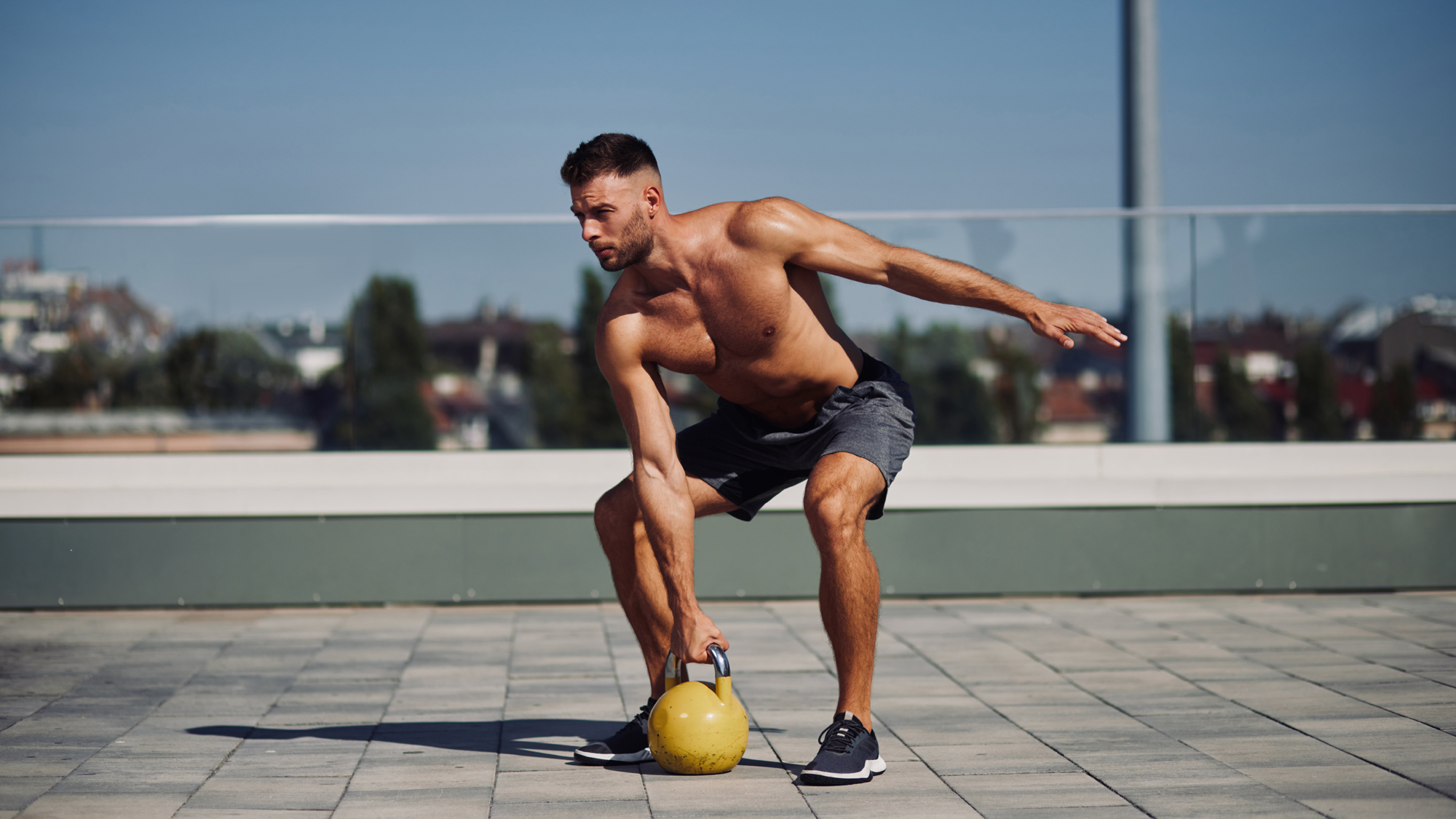This 25-minute kettlebell workout builds lower body strength in just five moves
This five-move routine works your legs and strengthens your core in less than half an hour


If you're on the lookout for muscle-building workouts, most sessions focus on your upper body, areas like your chest, arms, and shoulders. But this 25-minute kettlebell session can help when you want to train your lower body.
Although many gyms and fitness centers have dedicated leg and lower body machines, you don't need much equipment to get started with this short routine—just one of the best kettlebells.
Training with a kettlebell is a great way to work your legs and your core, an area of mid-body muscle that includes your rectus abdominis, the section of ab muscle responsible for your six-pack.
But there's more to your core than aesthetics; kettlebell exercises require balance and stability, and your core plays a vital role in both. That's why this short routine from personal trainer Rhiannon Bailey is an effective way to improve your performance and build a stronger lower body.
To get the most from your training, you'll do each move for 40 seconds, take a 20-second break, then progress to the next exercise. There are five strength-building moves in the round, and you'll repeat the round five times for a 25-minute workout.
Watch Rhiannon Bailey's five-move kettlebell workout
A post shared by Rhiannon Bailey (@rhiannoncbailey)
A photo posted by on
This exercise style is known as High-Intensity Interval Training, where the aim is to work hard for short bursts, take a quick rest, and tackle the next move in the routine. Working out in this way gets your heart pumping and increases your metabolism.
That's why many people use a HIIT workout for fat loss, as you'll continue burning energy for hours after you finish. But as Bailey's session shows, you can also use HIIT to build muscle.
Start your week with achievable workout ideas, health tips and wellbeing advice in your inbox.
It's a variation on HIIT known as HIRT, high-intensity resistance training. The basics are the same—train hard for short bursts without long breaks—but the focus is on strength training, often with weights.
But that doesn't mean you lose out on any fat-burning potential, as you'll still be increasing your heart rate and burning energy throughout the day. It may be even more effective for weight loss than cardio alone.
When comparing cardio vs weights for weight loss, resistance training often comes out ahead. Increasing your muscle mass also increases your metabolism, so you get the combined effect of the HIRT workout and improved resting energy expenditure.
If your goal is to drop pounds, but you don't want to take on an intense kettlebell workout, you can do plenty of low-impact activities instead, like walking to lose weight. Helpfully, you can take things at your own pace and still see results.
If you enjoy walking, you can monitor your steps (as well as sleep and workouts) using one of the best fitness trackers. The wrist-worn devices are a great way to stay motivated and track your progress over time, which will help you develop long-lasting habits for sustainable change.

James is a London-based journalist and Fitness Editor at Fit&Well. He has over five years experience in fitness tech, including time spent as the Buyer’s Guide Editor and Staff Writer at technology publication MakeUseOf. In 2014 he was diagnosed with a chronic health condition, which spurred his interest in health, fitness, and lifestyle management.
In the years since, he has become a devoted meditator, experimented with workout styles and exercises, and used various gadgets to monitor his health. In recent times, James has been absorbed by the intersection between mental health, fitness, sustainability, and environmentalism. When not concerning himself with health and technology, James can be found excitedly checking out each week’s New Music Friday releases.